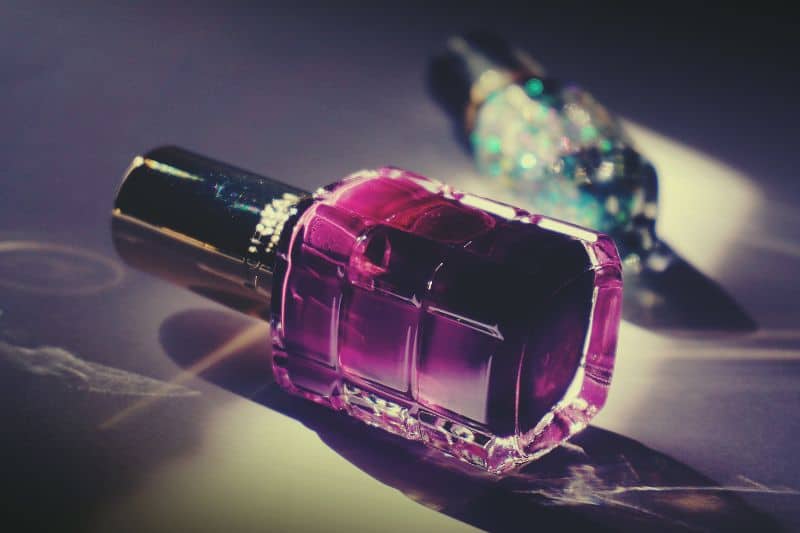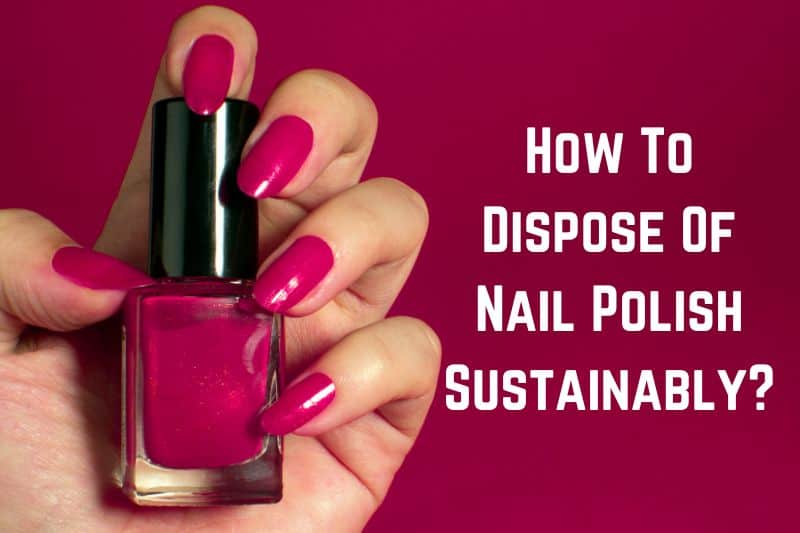Nail polish is a lacquer used to protect and adorn fingers and toenails. Nail polish is composed of chemicals and plastic, even if it looks amazing on your nails. Several of these dangerous chemicals have been connected to fertility problems, endocrine system disturbances, and cancer.
Because traditional nail polish is poisonous and combustible, it cannot be recycled or disposed of properly. The EPA categorizes it as hazardous household waste as a result. Since nail polish harms the environment, it should be disposed of correctly.
Read: What is Zero-Waste Fashion and Why is it Important?
Various Ways To Dispose of Nail Polish
Since nail polish contains hazardous chemicals, proper disposal is imperative. Toxic ingredients like formaldehyde, formaldehyde resin, toluene, camphor, and dibutyl phthalate are frequently used in nail polish formulations. For example, the Environmental Protection Agency believes that formaldehyde is likely carcinogenic to humans.
Furthermore, contact with some substances might result in contact allergic reactions and irritation, which is an inflammation of the skin caused by formaldehyde resin, toluene, and dibutyl phthalate. However, if used orally, camphor oil has the potential to be harmful. Environmental harm may result from nail polish disposal done incorrectly.
Nail polish can spill out of its bottles and seep into the ground if it is haphazardly put in the garbage. Nail polish waste is sometimes unavoidable. However, we strongly advise you to look for other ways to dispose of your nail polish because they are risky, explosive, and bad for the environment.
Repurpose Your Old Nail Polish
You can reuse the nail paint if you have at least half of it left and want to avoid using it on your nails. For instance, experiment with color mixing to create a new hue you prefer. Alternatively, you can use it to paint or scrape objects like your purses or shoes. This is a clever technique to reuse and dispose of nail polish.
Recycle It
If the nail polish bottle has been emptied, use acetone to clean any remaining substance, then rinse and dry the bottle. If the material is recyclable, you can place the empty, clean bottle into the recycling container. Remember to take off the labels and cap.
You may use the mail-in nail polish recycling scheme if the nail polish container is full. If the polish in your bottle is not empty, locate a recycling center that takes nail polish.
Give Your Nail Polish Away
Look for a nearby donation center and contact them to see whether nail polish is accepted. It would make many people happy to use up the excess nail paint. Try giving your old nail polish to your friends if you cannot find a donation center that would take it.
Use a Nail Polish Thinner
You can buy nail polish thinner that dissolves polish if your neighborhood waste management agency is opposed to nail polish as hazardous trash. After filling the nail paint bottle with thinner, leave it alone for a couple of hours.
After that, transfer the mix onto a paper towel or piece of paper and allow it to dry. After it dries completely, you can discard it in the garbage. After using it, only dispose of nail polish in the garbage or down the drain. This may damage the ecosystem and taint water supplies.

Nail Polish Environmental Problems
Nail polish has several detrimental environmental repercussions in addition to its cosmetic benefits. The environmental effects of nail polish cannot be disregarded, even while receiving a pedicure or manicure can be a soothing experience for the body and mind.
Here are several nail polish environmental issues you should be aware of, particularly if you do not know how to dispose of nail paint properly.
Microplastic from Glitter Nail Polish
Glitter is a type of microplastic made of polyethylene terephthalate and etched aluminum, both of which have been demonstrated to have negative environmental consequences.
They are not able to biodegrade because they are made of plastic and are not recyclable. They can cause significant harm to aquatic life and marine animals after long-term land and water contamination.
Issues With Toxic Landfills
When nail polish is discarded, it ends up in landfills, where it can leak dangerous chemicals into the soil and even into water, such as formaldehyde, toluene, and dibutyl phthalate. These drugs, often called the “Toxic Trio,” have several detrimental consequences on health.
Pollution of the Environment
Since nail polish containers are also composed of plastic, air pollution may occur. Many dangerous compounds are discharged into the atmosphere with the natural degradation of materials like plastics. This is due to the fact that plastics are made of a mixture of substances that evaporate in very hot conditions.
Can You Dump Nail Polish Down the Drain?
Many individuals in America have developed the bad habit of flushing anything fluid down the drain. While this seems like a simple solution, it is not recommended. Remember that nail polish is something you should never throw down the drain.
Nothing liquid can be thrown down the drain just like that. There are numerous repercussions, even if you may be able to successfully dispose of them, exactly what you wish to achieve. It has certain chemicals and dangerous compounds that could poison the groundwater.
Should you take this action, the nail polish can make its way into the sewer lines and might contaminate water bodies. As you already know, we treat our water waste to make it fit for human consumption or the creation of other materials.
Once some nail polish elements are present, processing or consumption becomes dangerous. Therefore, it is best to look for other disposal methods. The ecosystem, particularly the sea and ocean, and the local wildlife suffer when this occurs.
Read: Is Cider Fast Fashion? Or Is It Ethical and Sustainable?
How Long Does Nail Polish Take To Decompose?
It is important to remember that nail polish is composed of plastic and that tiny plastic particles could be discharged into the environment if it chips off. As a result, the rate of degradation of microplastics and nail polish might vary from 20 years to 5 centuries.
Of course, microplastics should dissolve more quickly due to their small size and easier decomposition process. Still, if they are left to remain in proximity to the environment, they have the potential to become extremely dangerous over time.
Furthermore, the breakdown of non-biodegradable materials, including nail polish, takes time, intense heat, and moisture. Once these elements are in place, breakdown will happen far more slowly. However, there is more disclaimer. Materials that are not biodegradable never fully decompose.
Rather, substances such as nail paint release microplastics into the surroundings. Consequently, the vegetation or soil that normally welcomes the broken-down fragments of biodegradable materials does not absorb the microplastics.
Because plastic contains poisons, they pose a threat to the ecosystem. They can eventually become highly dangerous if they come into contact with the environment.
FAQ’s
Are nail polish bottles recyclable?
Recycling a nail polish bottle is dangerous if the excess has not been completely removed in any of the situations. Recycling stations will face additional challenges if bottles are disposed of in this manner since they will have to worry about separating them first.
Is nail polish remover bad for the environment?
Nail polish removers with acetone as a component contain toxic substances such as formaldehyde and dimethyl ketone, which are harmful to health. Its ability to reduce blood pressure can result in cardiovascular dysfunction.
Can I empty the nail polish bottle before recycling it?
Before recycling a nail polish bottle, it is necessary to ensure the bottle is completely empty. You can rinse off the leftover nail polish from the bottle. There should not be anything stopping the bottle from going into recycling after the contents have been used up and rinsed to get rid of any remaining nail paint.
Can nail polish be considered hazardous waste?
It may surprise many that nail polish is regarded as a hazardous waste because of its harmful compounds. Nail polish is only among several things that should be disposed of with extra care, even if they are normally considered safe enough for daily use.
Conclusion
Among the most frequently used cosmetics is nail polish, which we use a lot each year. Although using nail polish to express oneself can be enjoyable, it is crucial to dispose of it correctly to save the environment.
Remember to handle it as hazardous waste, and ask your neighborhood waste management agency for detailed directions. If you have unused nail polish, think about finding a new use rather than throwing it away. These pointers will help you contribute to trash reduction and environmental protection.






